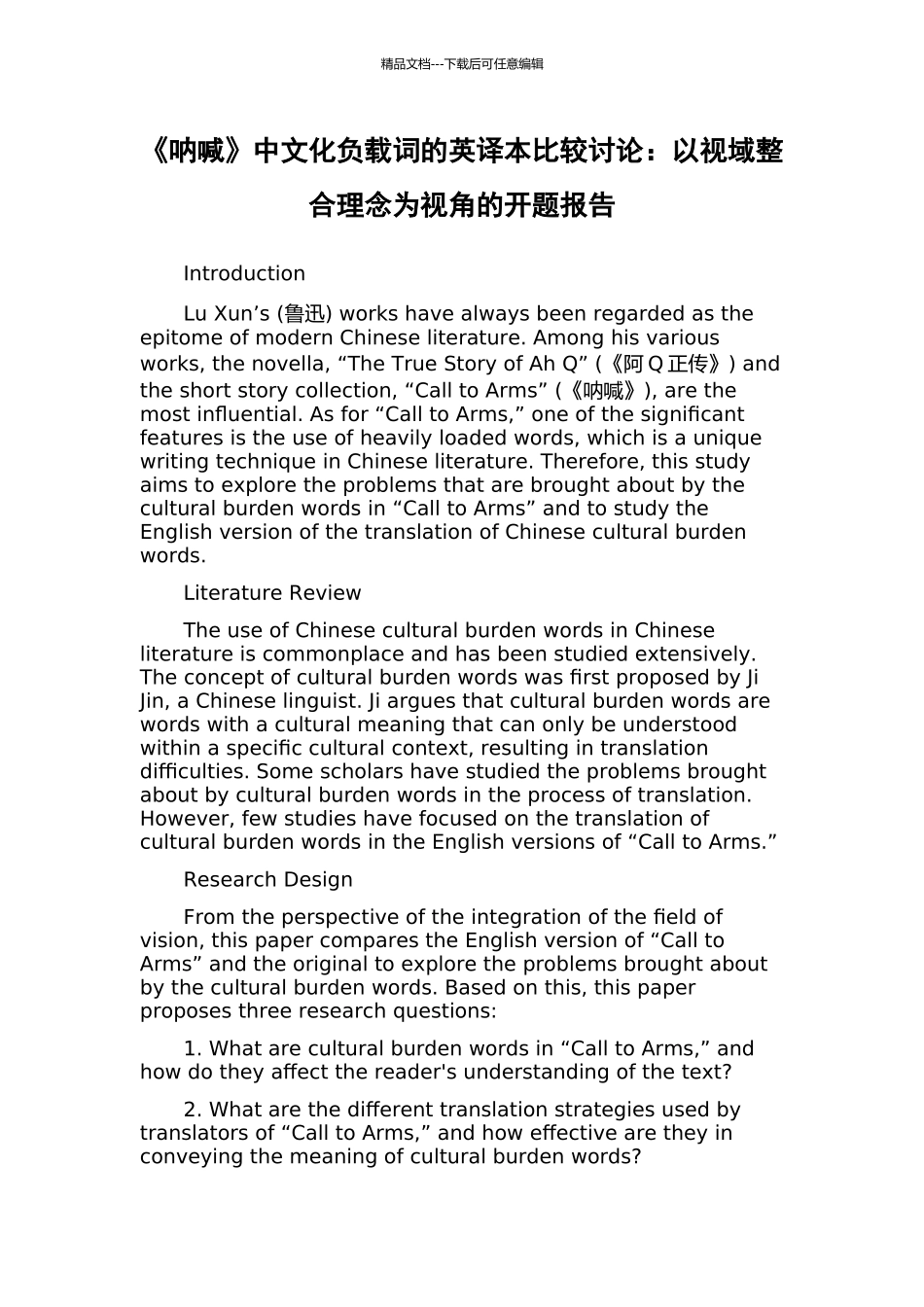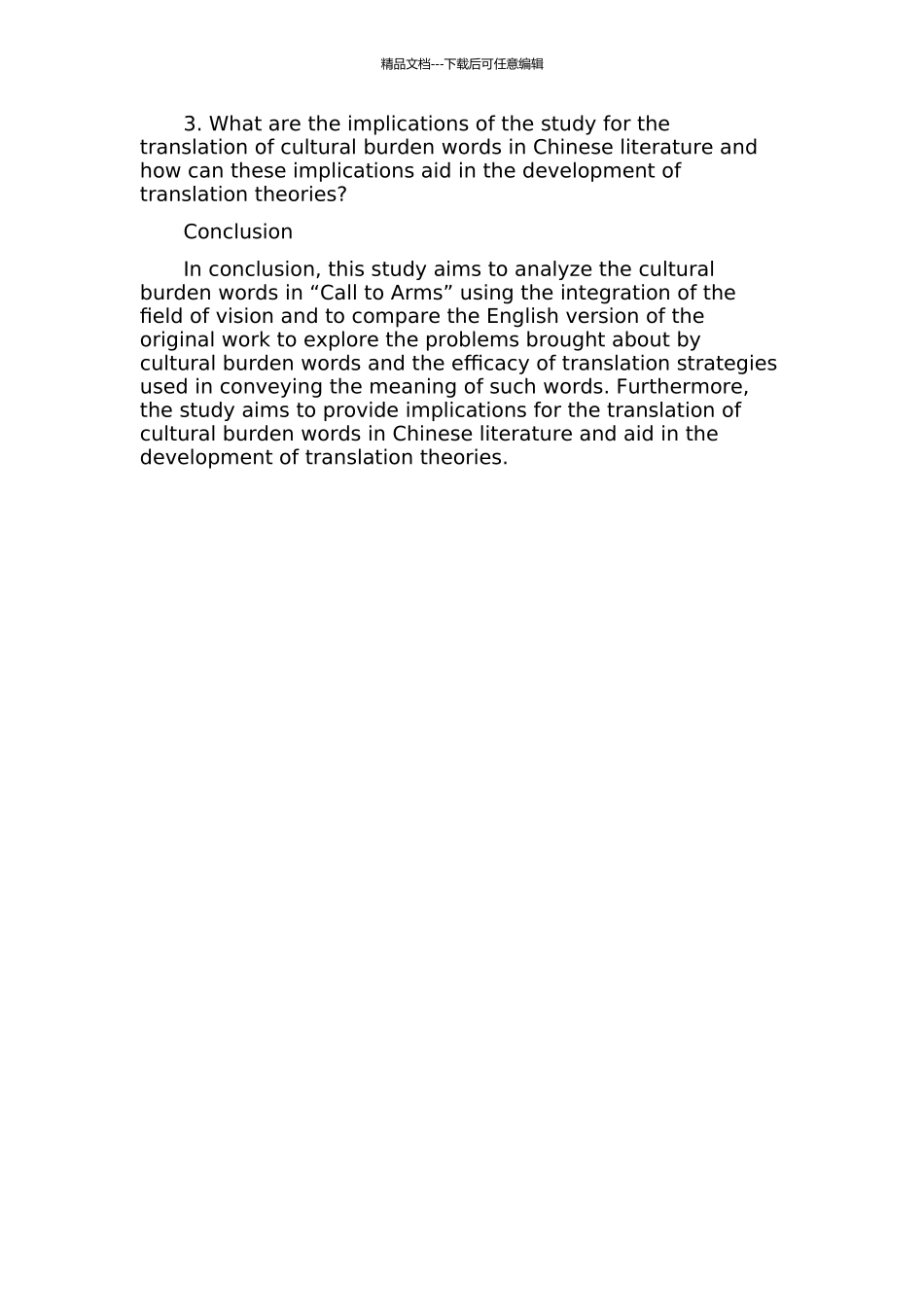精品文档---下载后可任意编辑《呐喊》中文化负载词的英译本比较讨论:以视域整合理念为视角的开题报告IntroductionLu Xun’s (鲁迅) works have always been regarded as the epitome of modern Chinese literature. Among his various works, the novella, “The True Story of Ah Q” (《阿 Q 正传》) and the short story collection, “Call to Arms” (《呐喊》), are the most influential. As for “Call to Arms,” one of the significant features is the use of heavily loaded words, which is a unique writing technique in Chinese literature. Therefore, this study aims to explore the problems that are brought about by the cultural burden words in “Call to Arms” and to study the English version of the translation of Chinese cultural burden words.Literature ReviewThe use of Chinese cultural burden words in Chinese literature is commonplace and has been studied extensively. The concept of cultural burden words was first proposed by Ji Jin, a Chinese linguist. Ji argues that cultural burden words are words with a cultural meaning that can only be understood within a specific cultural context, resulting in translation difficulties. Some scholars have studied the problems brought about by cultural burden words in the process of translation. However, few studies have focused on the translation of cultural burden words in the English versions of “Call to Arms.”Research DesignFrom the perspective of the integration of the field of vision, this paper compares the English version of “Call to Arms” and the original to explore the problems brought about by the cultural burden words. Based on this, this paper proposes three research questions:1. What are cultural burden words in “Call to Arms,” and how do they affect the reader's understanding of the text?2. What are the different translation strategies used by translators of “Call to Arms,” and how effective are they in conveying the meaning of cultural burden words?精品文档---下载后可任意编辑3. What are the implications of the study for the translation of cultural burden words in Chinese literature and how can these implications aid in the development of translation theories?ConclusionIn conclusion, this study aims to analyze the cultural burden words in “Call to Arms” using the integration of the field of vision and to compare the English version of the original work to explore the problems brought about by cultural burden words and the efficacy of translation strategies used in conveying the meaning of such words. Furthermore, the study aims to provide implications for the translation of cultural burden words in Chinese literature and aid in the development of translation theories.

